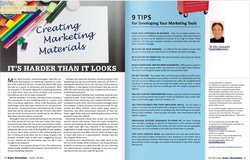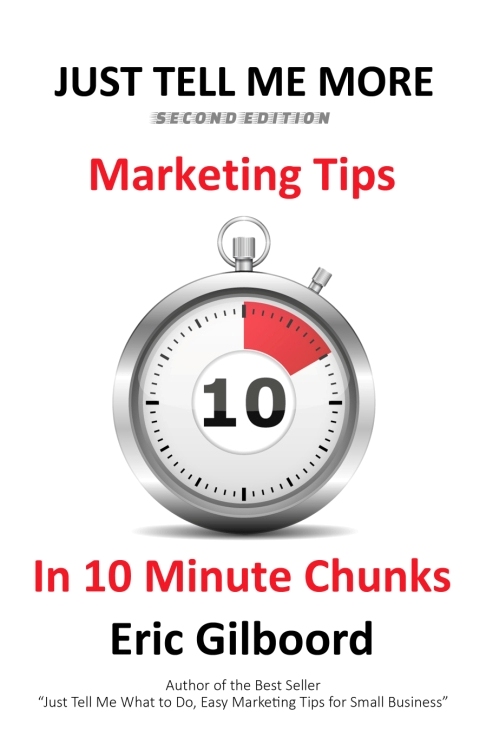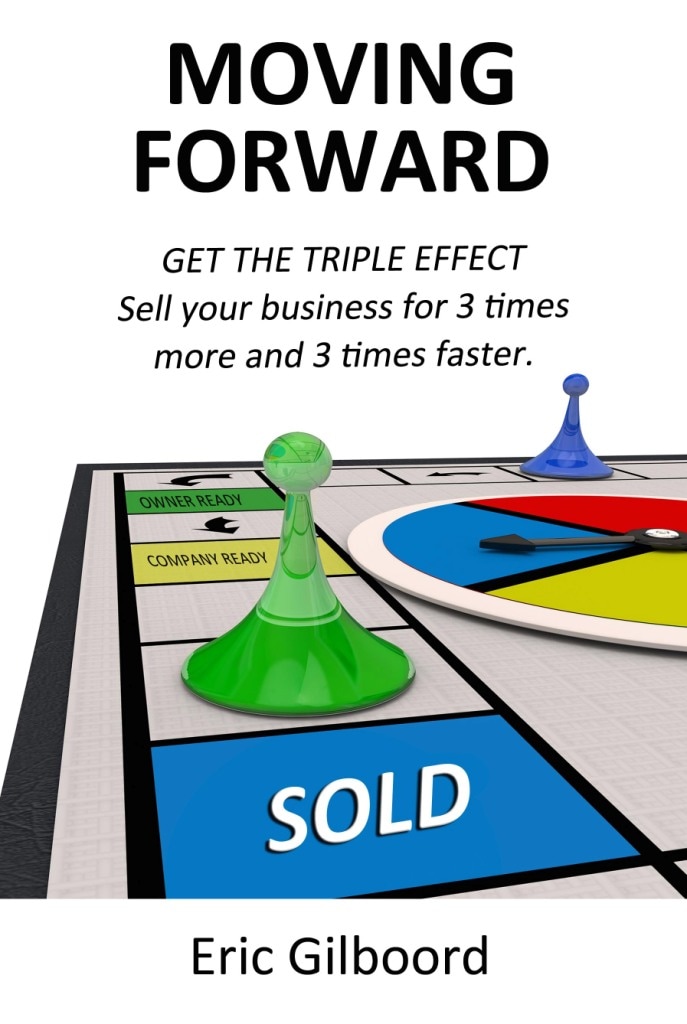
by Eric Gilboord from his book 'Just Tell Me More'.
Get FREE PDF of complete book.
Many small business owners/managers view the creative development of marketing materials as a burden to be avoided at all costs. Conversely, others look upon the task as a source of excitement and amusement. After all, everyone is constantly exposed to marketing materials on a daily basis. Since you know all about your business, how difficult can it be to make a brochure?
Neither attitude is in the best interests of your company. The preparation of your marketing tools is a serious and often frustrating experience. Many small businesses (and many larger ones) have been known to run around at the last minute, creating brochures and hand-outs for a trade show that will be starting the next day. Printers, who often bear the brunt of the pressure, usually ask for the delivery date when they first discuss a new job.
Although it may seem to be exhilarating to do everything in a short period of time, you may later
realize that important points have been left out of your presentation materials. If you do leave something out and a prospect (potential customer) asks to see a list of the benefits of your product or service, don’t place yourself in the embarrassing position of having to write them out on a scrap of paper; the prospect shouldn’t have to take notes. Suggesting they go to your website for the information says you don’t care enough to be prepared.
However, if you prepare ahead of time, the information will be readily available to the prospect and reinforced in all of your marketing materials.
Perhaps your materials lack focus and the prospect is left wondering who you are and exactly what you do. After reviewing your brochure, he or she may have more questions than before. It may appear to the prospect that you merely offer the same services that your competitors do at an unjustified premium price.
Some companies develop their marketing materials over a period of time. These materials, which usually include a collection of ads, brochures, and a website that bear no resemblance to each other, send inconsistent messages about the company. In these instances, the business card, the sign outside the office, website, social media pages, posters, brochures, and other presentation materials all have different logos, looks, and even conflicting descriptions of the products or services offered.
Marketing materials should also include very clear and specific contact information. There are some wonderfully creative and exciting ads that present products or services you might need right now. However, if the company has neglected to include contact information, you can’t make a purchase because they didn’t tell you where or how to get in touch with them or a representative. Sounds crazy but this happens all the time.
Sometimes your advertisement may make sense to you but not to the reader. When someone is not living with your products or services on a daily basis like you are, they may not understand your industry’s language or may miss a selling feature that you have taken for granted.
9 Tips For Developing Your Marketing Tools
1. Plan Your Materials in Advance. Also, try to adapt creative concepts and looks to different media and sizes of materials. The basic look of a magazine ad often can be adapted to a poster or to a sign in a store. These materials will help your company maintain a consistent look and will reinforce a specific message.
2. Be Clear on Your Message. It is difficult for the reader to know who you are or what they are to do if you try to deliver too many messages.
3. Be Clear On The Objective. The communication piece must say clearly what you want the reader to do.
4. Avoid Combining Two Or More Businesses. Offering two products to the same target group within one brochure or ad might seem efficient. The risk of confusing the reader could cost you potential sales.
5. Do Not Assume. The reader does not know your product as well as you. They are not thinking about your product or service on a daily basis and may not pick up on its selling points if presented too subtly. Be straightforward and direct in what you say. Do not make the reader work too hard. A clever twist of words may be more of a challenge than the reader is prepared to take on.
6. Include Contact Information. Make it easy for customers to contact you by providing several ways to get in touch: by telephone, fax, e-mail, websites, social media pages, toll-free numbers, etc.
7. Use Professionals For Their Individual Skills. Do not expect a writer to provide the visual impact that a designer can offer. Printers or production people can rarely write compelling copy. Not all designers are qualified to make websites. I think you get the point. Your expectations do not qualify suppliers.
8. Encourage Outside Resources To Speak Up. Let them challenge your thoughts, bringing an element of objectivity to the creative development process. Original ideas from others are part of what you are paying for. Fresh eyes can be as valuable as the skills you hired them to provide.
9. Test Your Creative Ideas. Use small print runs and split email blasts. Show materials to those connected to your business as and others not in your target group or industry. Remember, you are looking for clarity and understanding of your message, not creative development tips from unqualified sources.








